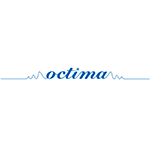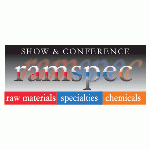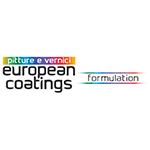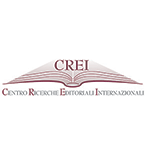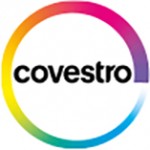
- Home
- Eventi
- 27 Maggio 2025 – Milano
- 22 Ottobre 2024 – Milano
- 15 Maggio 2024 – Milano
- 31 Gennaio 2024 – Milano
- 19 Settembre 2023 – Milano c/o Palazzo FAST
- 20 Aprile 2022 – 5° Webinar:
- 20 Gennaio 2022 – 4° Webinar:
- 23 Giugno 2021 – 3° Webinar:
- 11 Marzo 2021 – 2° Webinar: Presentazioni e Registrazioni
- 11 Novembre 2020 – 1° Webinar:
- 29 Marzo 2017 – Compotec CarraraFiere
- “Ramspec” 2016 – Salone Prodotto Chimico – Milano Seconda Edizione
- 7 Aprile 2016 – Compotec CarraraFiere
- 25 Giugno 2015 – Milano Palazzo Bovara
- 25 Marzo 2015 – Milano Palazzo Fast
- Ramspec 2014 – Modena 2-4 Ottobre
- Made Expo 2012 – Milano 18 Ottobre
- Made Expo 2011 – Milano 7 Ottobre
- Compositi Expo Congress 2010 – Modena 13/14 Ottobre
- Compositi Expo Congress 2009 – Modena 14/15 Ottobre
- Prossime Iniziative
- Contatti


11 Novembre 2020 – 1° Webinar:
Sanitized hygienic coatings for public and private environments
Speakers: David Tierney – Timo Schock/Sanitized (Svizzera)
Abstract: Sanitized has provided antimicrobial solutions since 1935 for many applications, including textiles, polymers and paints. Hygienic surfaces in public and private environments have been a discussion point for many years. About a century ago heavy metals, formaldehydes and solvent-borne systems ensured antimicrobial environments to protect materials from microbial attack. We`re now in the 4th , and probably least harmful generation, of antimicrobial solutions. In the meanwhile the hygiene awareness of humans has decreased due to improved material protection and shorter lifetimes of products. However, there are two aspects which need to be differentiated: material protection and the existence and persistence of microbes on surfaces, where the material acts as a “contact platform” to exchange all types of microbes between humans and animals. All antimicrobial solutions have one common sense: the incoming or added microbes must be eliminated, before they can spread or grow. Depending on the material, application and environment potential solutions vary a lot. One thing is for sure: bacteria and other microbes make more than 90% of live on earth and will coexist with humans at any time – and we also need some of them to exist. Therefore we need to apply antimicrobial solutions specifically, especially in these places, where ideal environmental conditions for microbes are given. The target of antimicrobial materials is to reduce the contamination risk for materials and the infection risk for humans to the lowest possible. The following speech gives some insights on how to create antimicrobial surfaces, what benefits they can responsibly deliver and how the efficacy against bacteria, fungi and viruses can be tested.
Water-borne polyurethane coatings with outstanding resistance to disinfectant
Speakers: Eva Tejada Rosales – Eugenio Galbiati/Covestro (Spagna-Italia)
Abstract: In light of the current situation regarding coronavirus highly durable coatings have gained an even more important role in our daily life: In order to fight against the spread of the virus, more often stronger disinfectants and hand sanitizers are used. The coatings on various substrates must withstand a wide range of chemicals and solvents. In our presentation we will demonstrate how effectively the polyurethane based coatings bear frequent cleaning cycles and high dosage disinfectants without traceable changes in the appearance or performance. With examples of furniture, industrial, and architectural coatings based on polyurethane chemistry, the perfect solutions for high demanding surfaces will be introduced
Innovativi metodi di coatings antimicrobici ad alta sostenibilità
Speakers: Valentina Beghetto – Riccardo Samiolo/Crossing (Italia)
Abstract: Crossing develops products/processes that reduce the environmental impact of industrial manufacturing. Our products (ACL) are “green” chemicals that allow to produce antimicrobial packaging by increasing the “shelf life” of food products or impart antibacterial activity to the surfaces of industrial packaging machines. This proprietary technology reduces production costs for the benefit of environmental sustainability. In particular, Crossing has developed innovative coatings that can be easily and efficiently applied to protect surfaces or manufactures from bacterial attack without releasing toxic substances into the environment.
BPR, REACH e CLP – Sfide future per le aziende nei confronti dell’evoluzione dei regolamenti
Speaker: Paola Ulivi/Danger & Safety (Italia)
Molecular Plasma Technology: a new process to graft virucidal compounds onto any substrate
Speaker: Marcelo Milani/Molecular Plasma Group (Lussemburgo)
Solvay introduces Actizone™, a 24-hour antimicrobial cleaning technology
Speakers: Laura Gage – Amit Sehgal/Solvay (USA)
Abstract: Since the onset of the COVID-19 pandemic, consumers and businesses alike have been searching for ways to uphold health standards and feel protected in an uncertain world. Solvay’s ActizoneTM, a patented technology traps antimicrobial actives to form an invisible protective film on surfaces. The actives initially kill 99.9% of bacteria and viruses and go on to deliver long-lasting disinfection and peace of mind to consumers while ensuring excellent shine and a residue-free finish.
Achieving Hygienic Surface Protection with Antimicrobial Coatings
Relatori: Glenner M. Richards – Ivan W. Ong /Microban (GB)
Abstract:Antimicrobial coating technologies are surface treatments that contain antimicrobial chemical agents designed to inhibit the attachment, survival, and growth of microbes on surfaces. These treatments add protective and hygienic value to a product. Traditionally, antimicrobial coatings are permanent treatments that are incorporated during product manufacture and intended to reduce the bioburden on a surface within hours after a contamination event. New technologies include coatings that are temporary in duration and introduced to offer rapid disinfection (within minutes) with residual activity over a period of hours. This residual value-added performance has found relevance on high-touch surfaces, textiles, and in the healthcare industry. Mr Richards, Ph.D. and Mr Ong, Ph.D from Microban International will be exploring antimicrobial coating technologies, the regulations that govern them, and how these formulations are shaping the future of hygienic surface protection.
